by Jeremy Miller
Thursday, Sept. 28, 2017, marked the death of the 1,044th person that we know of killed by Tasers in North America. If more access were available to jail and prison records, this number would undoubtedly significantly increase.
The most recent Taser-related death occurred after a man, Marcellus Toney, was detained by Oakland Police for allegedly trying to flee a multi-vehicle accident. This unnecessary death throws into relief the primary reason why the people of San Francisco have consistently rejected Tasers for the SFPD.
San Franciscans have successfully opposed the issuing of Tasers to SFPD officers five times in the last 13 years, spanning proposals by four previous police chiefs, during which time 955 of the at least 1,044 people killed by Tasers perished. A majority of these deaths occurred in California, including 29 people killed in the Bay Area.
In addition, 10 years ago the United Nations Committee Against Torture (remember, the U.N. was founded in SF) declared Tasers a torture device. Yet on Nov. 3, the San Francisco Police Commission voted and approved a renewed proposal to arm the SFPD with these weapons. This begs the question: Why are they being proposed again, against the will of the people, and who are the proponents of Tasers?
Why are they being proposed again, against the will of the people, and who are the proponents of Tasers?
The working groups

In May of this year, the San Francisco Police Commission attempted to channel work on the hundreds of reforms suggested by the “Blue Ribbon Panel on Transparency, Accountability, and Fairness in Law Enforcement,” the DOJ COPS (U.S. Department of Justice Community Oriented Policing Services) report, and members of the public by creating SFPD sponsored “Executive Reform Groups,” which have been variously rendered as “Task Forces” and later redubbed “Working Groups.” These groups were composed of “stakeholders,” a legally undefined term that included interests as disparate as the San Francisco Police Officers’ Associations, The San Francisco Bar Association, The Coalition on Homelessness and San Franciscans for Police Accountability.
The groups had various broad purviews such as “Community Oriented Policing,” “Bias” or “Use of Force” – all except one oddly specific. This was the working group on Conducted Energy Devices (CED) aka Tasers. Here the current push to arm SFPD with Tasers saw its initial “public” offering.
Although these group meetings were announced via the SF Police Commission’s webpage, they remained largely unadvertised and the meeting times served to exclude nearly all working San Franciscans. As a representative example, one meeting was held at 850 Bryant on Thursday, June 1, beginning at 9 a.m. What working San Franciscan will (or even can) go to the Hall of (In)Justice at 9 a.m. unless they have to go to court?
In the first meeting of the CED working group, Commissioner Sonia Melara and Police Officers’ Association (POA) President “Marty” Halloran attempted to address Tasers as an inevitability, presenting an already composed eight-page draft policy. The POA was so convinced that this was a fait accompli that they demanded “meet and confer” rights on the matter. (Meet and confer is a legally binding process invoked in labor law where conditions of work are at stake.)
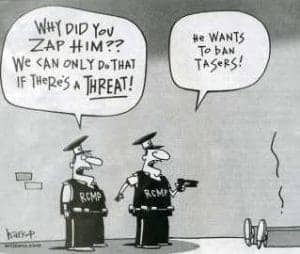
In response to this affront to the interests of San Franciscans, Police Commissioner Bill Hing suggested that there be consultation with input from communities on Tasers. Commissioner Melara said that after the work groups meetings had run their course, she would be open to two or three “target communities” for inclusion in discussions.
Samara Marion from the Department of Police Accountability (formerly the Office of Citizens’ Complaints) proposed that experts give testimony to the full commission and that based on those discussions and findings the working group could continue its efforts. But Melara disagreed with the process, suggesting that after the policy is adopted then and only then does it go to the Commission for discussion. The position was clarified at the June 1 meeting.
As reported by Jackie Barshak of San Franciscans for Police Accountability: “At the last meeting, Commissioner Melara stated that the purpose and goal of the group is to develop a policy around the use of Tasers, and that it is NOT to discuss whether it is an appropriate use of force. When this came up again at the meeting, there was considerable pushback by members of the group who wanted to discuss whether Tasers are an appropriate use of force for the department, but Commissioner Melara prohibited any discussion until Commissioner Hing fiercely objected, resulting in a shouting match between the two of them until Melara called time.
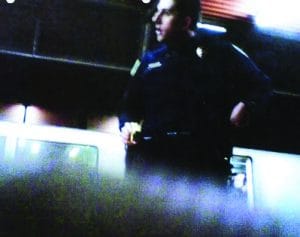
“There is palpable tension in the room between Commissioner Melara, the SFPD brass [and] the POA on one side of the aisle, who are trying to ram through an eight-page general order detailing the use of Tasers as a weapon, and the nonprofits and community members, who are outraged that they are being asked to provide input into a policy that they don’t want implemented. Melara is allowing law enforcement to create public policy, and doing so over the objections of the rest of the task force who are asking questions such as: Why do we need Tasers? What problems is SFPD trying to solve with this weapon? How do you justify the use and costs of Tasers?
Eventually, in late August, the SF Police Commission with the collaboration of the SF Human Rights Commission crafted what they thought would be controlled community input meetings. These were scheduled respectively for Sept. 12, 2017, at the Bill Graham Auditorium and Sept. 17 at City College.
True to their “target community” design, they attempted to limit the conversation to the first 100 people who signed up via the website Evite, citing “safety concerns.” Naturally this information was first broadcast to the people they wanted to hear from. This was a baldfaced attempt at silencing the community. For those who don’t know, the Bill Graham Civic Auditorium has a maximum capacity of 8,500 people!
The community meetings and the ‘community’ meetings
While Commissioner Melara, the POA, SFPD Chief Bill Scott and Mayor Lee were attempting to shove Tasers down San Francisco’s throat, there were multiple responses from the community to the renewed threat of SFPD taser deployment. On Sept. 9, the Coalition on Homelessness held a screening of the Taser documentary “Killing them Safely” followed by a panel discussion with Julie Traum of the SF Bar Association and Kevin Benedicto, an attorney who was part of the Blue Ribbon process.
Both experts opposed the issuing of Tasers to SFPD. Illych Sato, aka Equipto, also called for a community meeting the following evening to discuss the issue of Tasers. Again, the consensus was against issuing Tasers to SFPD.
‘Community’ meeting #1
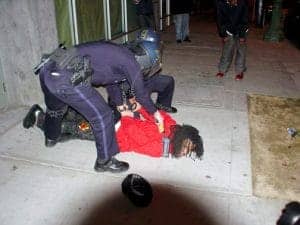
Somewhere between the huge presence of community members outside the auditorium angry at the proposition of Tasers for SFPD and the fact that people were actively documenting the intended violation of the Brown Act, the commission at the last minute decided to forgo its declared participation limit. The number of participants wound up being 150 people, and it was the actual community as opposed to those who were just invited to provide civilian cover for the police position.
The meeting was broken into two phases, one in which people were asked to take a number and join one of a handful of discussion groups at tables placed around the room, followed by another where all were asked to come together and comment for two minutes as is usual in a City government meeting. Each table was seeded with Black high-schoolers, completely unversed in any of the independent data surrounding Tasers, so as to exploitatively present the image of diversity!
By all accounts, at every discussion table, the No Taser position carried the day with at minimum a 10:1 ratio of those who opposed Tasers to those who supported. Also, those in opposition to Tasers were well armed with fact after damning fact, while those who supported relied entirely on emotional appeals that could be synthesized down to “Don’t you want to support our police?”
When the groups all reconvened for the second phase, the community demanded to be heard. This led to an at times loud battle between those angry at the coercive nature of the process and Commissioner Melara desperately trying and failing to control a beast of her own creation. The mainstream media, while at least not trying too hard to overplay the pro-Taser side, dotingly blamed the people’s anger on “those with anti-police sentiments” instead of recognizing that the people were legitimately angry at the various ways Commissioner Melara and the POA had attempted to pimp and/or silence community voices.
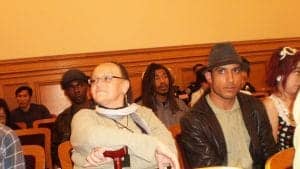
Despite Commissioner Melara’s objections, another hour passed with dozens of residents armed with facts about Tasers declaring their opposition to issuing them to SFPD, colorfully interspersed with two people who made brief non-fact based appeals for them. AXON Enterprises (formerly known as Taser International) had lost the day. Everyone knew it, and so preparations were made for the meeting the following week.
‘Community’ meeting #2
The next meeting was held in the same format, at the “City Cafe” of City College. But the turnout was very different. While community members dedicated to the fight against Tasers were again present to the extent that Julius Turman, president of the San Francisco Police Commission, estimated that 60 percent of those attending were against Tasers, there was an influx of late middle aged white people, who had never been present in any of the previous iterations of the City’s Taser battles, turning out to support the police.
In the breakout group that I was in, several of these people cited a fear of violent crime increasing in their neighborhoods. This sentiment is completely contradicted by the FBI’s Uniform Crime report released just eight days later, which shows violent crime in San Francisco down 7.7 percent from last year, and property crime down 10.6 percent, a continuation of a decline in crime that has been consistent for the last 25 years!
Dayton Andrews, a human rights organizer at the Coalition on Homelessness, accurately read the room when he commented on the fact that what was really at stake were people being afraid of Black and Brown and poor people – in fewer words: us – and thus desiring to see another alternative to the gun for use to satiate their irrational fears.
Speaking of irrationality, the police were much more vocal in the second “community meeting.” Believing they had a “friendly” audience, they came out with a sort of “Mr. Rogers presents Tasers” approach. They interspersed patronizing readings of the draft policy with ludicrous anecdotal examples.
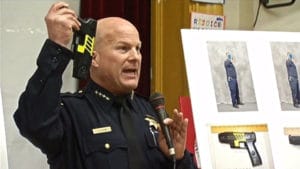
Commander David Lazar, in control of the SFPD “Community Engagement Division,” for example, cited a U.K. study that claimed that Tasers were a major deterrent to crime. He neglected to mention any specifics of the crimes that were deterred or the glaring fact that U.K. police, outside of “Special Operations” units – which fall somewhere between U.S. SWAT and Counter-Terrorism Units – are not armed with guns. This makes any conclusions drawn from the study inapplicable to the San Francisco context.
Even more ridiculously, Officer Gordon Moore was asked to give an example of a situation where a Taser would be necessary. The example he gave was a situation in which he was in Vallejo, Calif., and faced with a teenage fight. Allegedly, a girl who was angry with another teenager had pulled a knife to intimidate her antagonist. “’She has a knife! Shoot her, shoot her!’ they said. I almost did, but in the last second I saw in her eyes that she wasn’t ready to use it, so I didn’t shoot.”
Apparently, we were supposed to congratulate this officer for not shooting a teenage girl because other teenagers were telling him to! This is the psychology of someone we are supposed to give a new weapon to? And somehow this was supposed to be an argument for Tasers, despite the fact that the intended victim potentially fit several of the proscribed risk factors where Tasers become lethal such as a low body mass, excited state, no information about state of intoxication or underlying medical conditions etc.
But if the police were ridiculous, the next speaker took the cake …
Exploiting murders
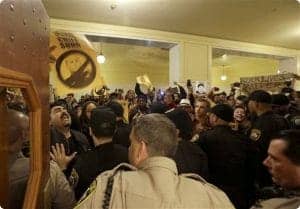
Awkwardly posing as a community member, “a downtown businessman” as he put it, a man dressed like a cross between an insurance salesman and a Eurotrash hotel manager went on a long uninterrupted soliloquy about what a shame it was that despite proximity to Silicon Valley, San Francisco police officers were “stuck in the Stone Age” in terms of the weapons they had access to. He then feigned to have a history in local law enforcement, which is fictitious, and, without using names, described the 2001 police murder of Idriss Stelley at the Metreon Theatre as an example of when Tasers should be deployed.
Idriss Stelley was shot 48 times by multiple SFPD officers just after 11 p.m. on June 13, 2001, while experiencing a mental health crisis. He was unarmed. In all circles other than local law enforcement, including internationally, the killing of Idriss Stelley is viewed as an illegitimate and unnecessary police murder, and bolstering this claim is the $500,000 successful wrongful death settlement two years after the fact, coupled with the fact that two of the officers who killed Idriss, Arshad Razzak and Ian Fuhrminger, were later further exposed as criminals and sentenced to time in the penitentiary.
The murder of Idriss was also the first killing that was exploited as far back as 2004 to attempt to justify issuing Tasers to the SFPD. Since then there have been at least six other cases exploited to this effect – Vinh Bui, Randall Dunklin, Pralith Pralourng, Mario Woods, Jessica Nelson Williams, Luis Gongora Pat – with the connecting threads being that they were all illegitimate uses of force by the SFPD, which only Dunklin survived, and that invariably the family members of all victims have rejected the use of their loved one’s death or injury as a justification for Tasers.
BlackRock, shadow banks, foreclosures and Tasers
Far from being merely a “civil” debate between proponents and opponents of Tasers, there is huge money behind the push to give SFPD these weapons and the money trail leads to BlackRock Inc. Haven’t heard of BlackRock Inc.? Neither have most people.
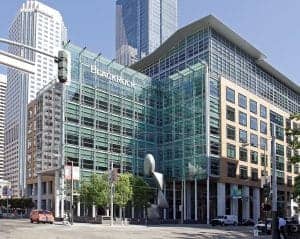
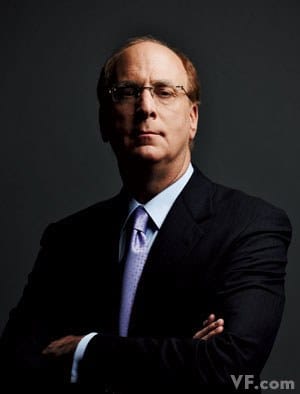
It is the world’s largest “shadow bank, managing at least $5.6 trillion worth of assets.” It also, since 2009, has been one of the majority shareholders of Axon Enterprises, formerly known as Taser International. By the most recently available SEC disclosures, it is the number one shareholder of Axon (Taser) with 6,686,211 shares of the company, as compared to 3,488,487 shares held by the next largest shareholder, Vanguard Group, and 585,839 shares held by Patrick W. Smith, the CEO.
Here we see most clearly the class divide when it comes to the Taser issue. The wealthiest corporation on the planet is pushing a torture/murder device for use on us.
And if capitalizing on weapons to kill community members weren’t enough, Blackrock also was one of the key entities responsible for the 2008 sub-prime housing crash, and the same entity that was contracted in a no-bid process to clean it up.
A “shadow bank” is essentially an unregulated financial vehicle which can conduct financial transactions that actual banks are prohibited from due to the risks. And unlike real banks, they are not forced to insure against their losses, instead shifting the burden to their institutional investors. They seem to be partial to pension funds and as of last year BlackRock was managing over $2.1 billion of the San Francisco Employees Retirement Fund!
The CEO of Blackrock, Larry Fink, is in fact credited along with one other money manager of being the inventor of the multi-trillion dollar debt securitization market, where debt from mortgages, credit card loans, auto payments etc. that were known to be potentially toxic was broken up into pieces and sold to thousands of investors. The sub-prime mortgage scandal that triggered the 2008 depression was just one of such schemes!
And to add insult to injury, after the crash, Blackrock was contracted by the federal government to manage the bailouts of Freddie Mac, Fannie Mae, AIG, Citigroup and others, thus being directly responsible for bailing out the banks while the people got squat. Again, this is who profits if San Francisco gets Tasers.
Which leaves us where?
I have focused in this article on debunking the mythology of an informed robust community debate on Tasers and showing the corruption at the heart of the affair. But this exploration leaves many questions unanswered.
Who has been paid off by BlackRock Inc. or Axon Enterprises to promote this position?
Has Commissioner Melara committed San Francisco ethics violations in her dogged attempt to curtail public input on this issue, and/or come into conflict of interest territory either by working too closely with the department that she is designated to oversee or through her and Blackrock’s shared history with the SF Chamber of Commerce? Is the Board of Supervisors willing to conduct hearings to determine the answers to these questions?
Should there be a higher level corruption investigation? Are there possible criminal charges?
When less than 30 percent of the SFPD reforms suggested two years ago have been submitted as complete, let alone verified as such, why would the Police Commission even consider the one recommendation that has been opposed by San Franciscans for the last 13 years? More conspicuously, why are we even considering issuing a known torture device to police officers? How many more people have to die?
Due to space constraints, I cannot address in this article the copious amounts of independent research that has addressed the hazards of Tasers, but I have included a link to a Taser fact sheet produced by the Coalition on Homelessness as a starting place for those new to the issue. I encourage people to research the matter, because I am confident of the conclusions of anyone who takes the time to deal with the facts.
As a result of the Nov. 3 vote, the SFPD is slated to begin using these weapons by December 2018, which means it is time to get busy. Let us not be fooled by false consensus or false community. If we stand united in defense of each other and against the interests of corrupt financial oligarchs and their bought-and-paid-for politicians, we can once again k eep San Francisco safe from Tasers.
This article is dedicated to Marcellus Toney, Idriss Stelley and all the victims of Tasering. Rest in power. We move in your spirit.
Jeremy Miller is co-director of the Idriss Stelley Foundation, part of the POOR Magazine family, member of the San Francisco No-Taser Task Force and a graduate of San Francisco State University. He can be reached at djasik87.9@gmail.com. This story has been updated since the Police Commission meeting.






